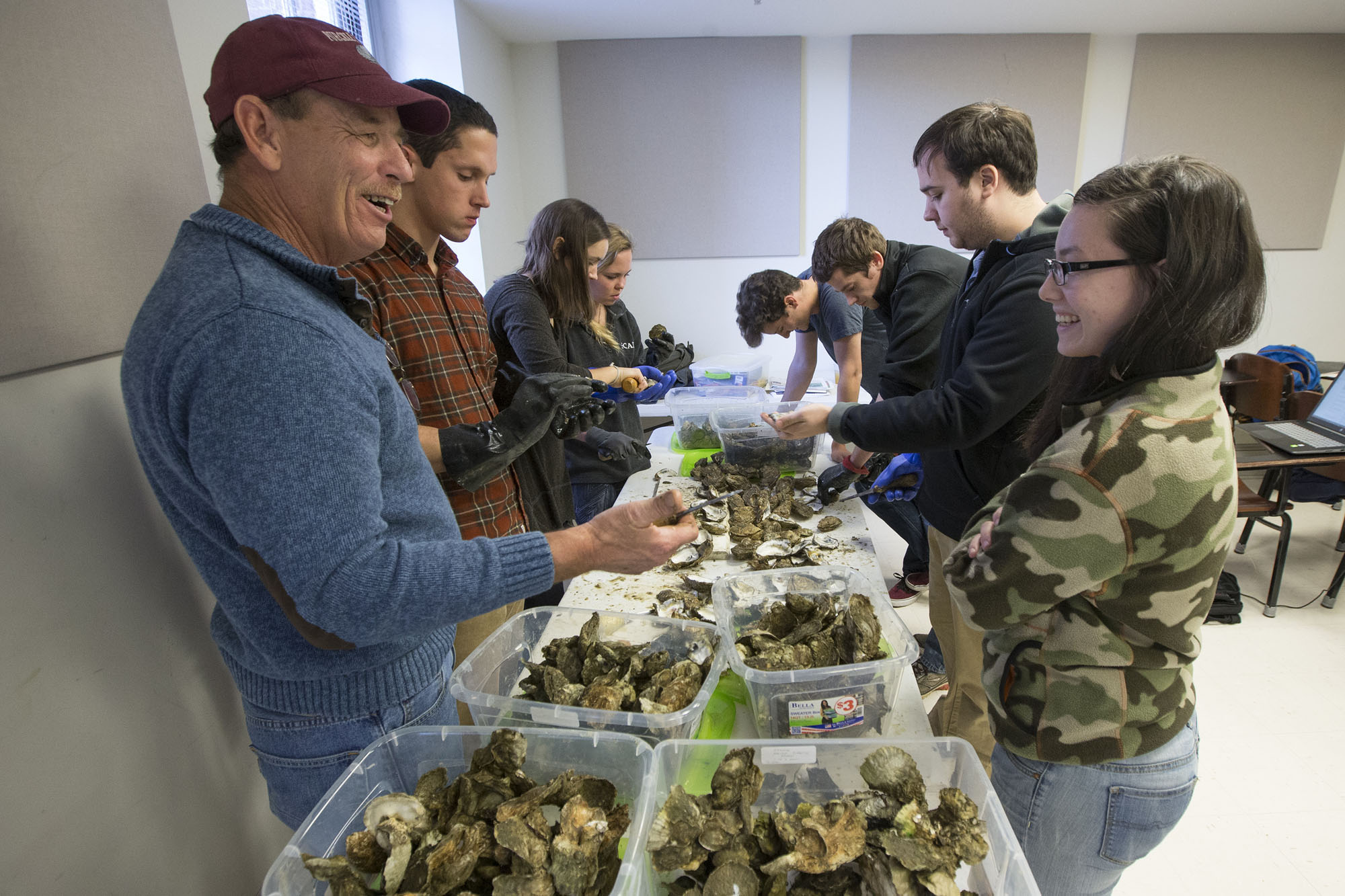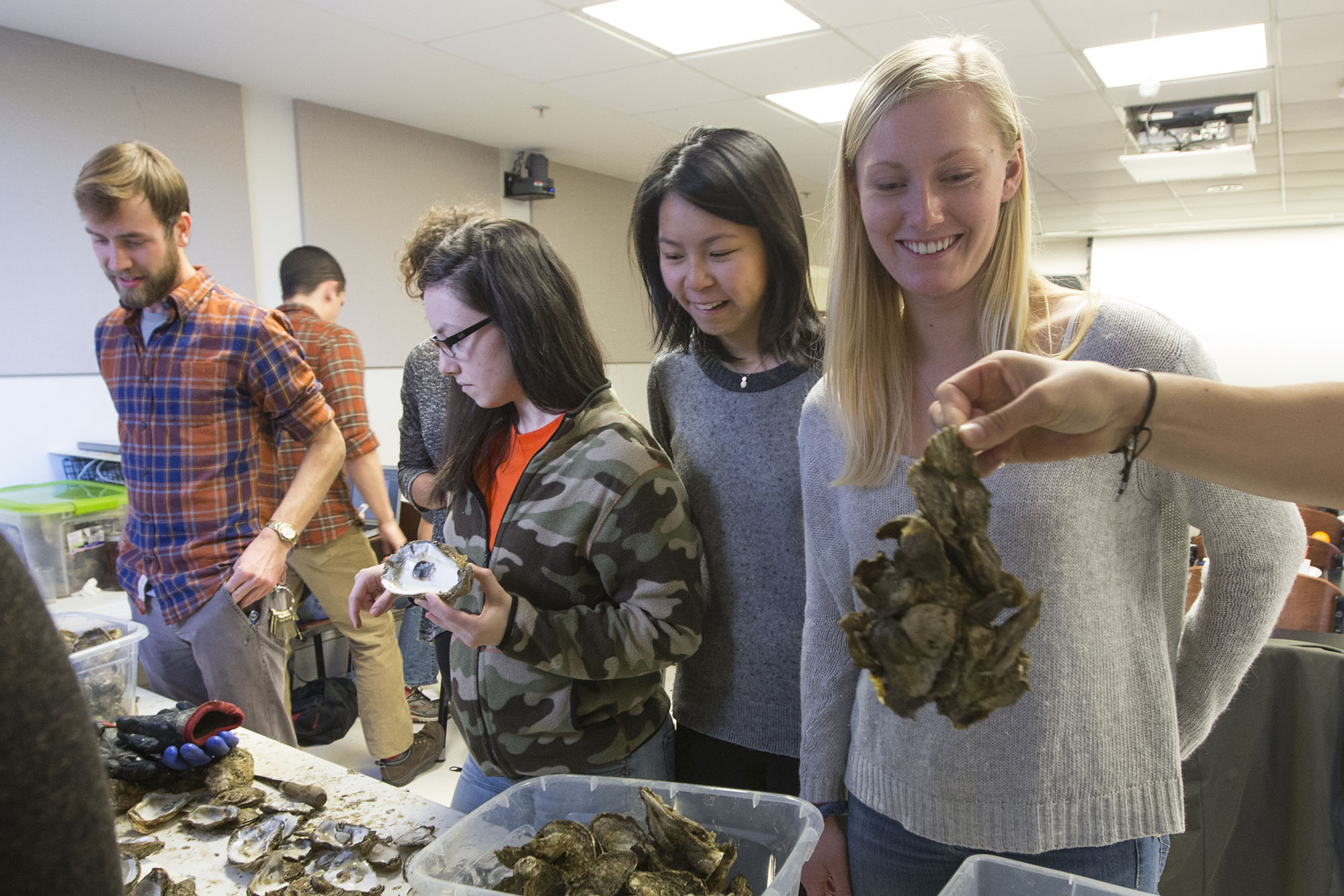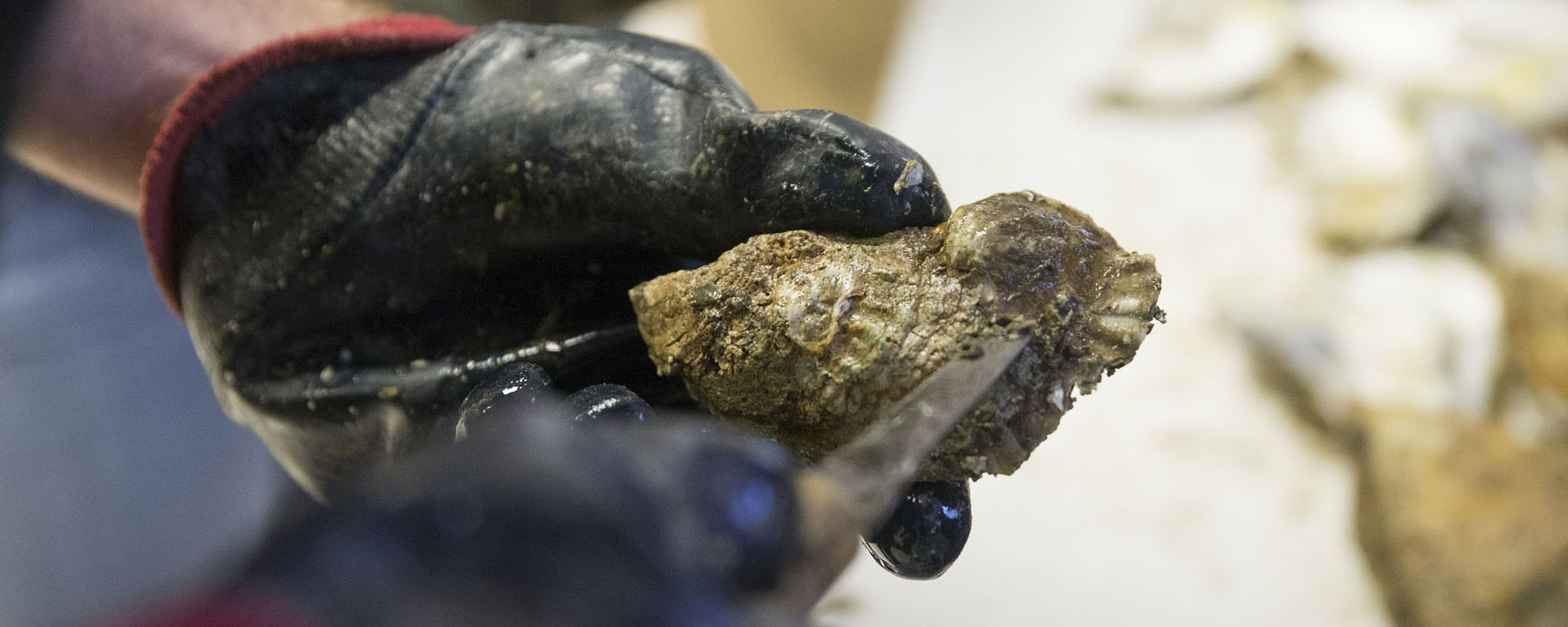When Chesapeake Bay watermen Dudley Biddlecomb and Philip Shahan recently brought a bushel of farmed oysters to a University of Virginia classroom, the students already knew something about how seafood comes to market.
The students were in environmental sciences professor Stephen Macko’s January-term course, “A Future for Fisheries?,” which is aimed toward using experiences to provide insights on the history of fisheries, how they are managed, how seafood is captured, processed, shipped, sold, and eventually ends up on the dinner plate at home and in restaurants. Increasingly that seafood is farmed, like the oysters cultivated by Biddlecomb and Shahan.
“For the first time, global aquaculture yields are now equal to wild-capture fisheries,” Macko said. “However, as the world population increases, demand for seafood is depleting wild resources. My goal is to help our students better understand our use of precious resources and how they might address these issues as citizens of the world.”

Waterman Philip Shahan discusses oysters with student Kristen Eppard.
During the two-week course, Macko and his 18 students visited several sites to learn more about the oceans and coasts, seafood production and the people who work in the industry. He also brought guest lecturers to class.
The students spent four days on the road, first visiting one of the largest seafood distributors on the East Coast, McDonnell’s Seafood near Baltimore. They got a guided tour of how seafood comes to the facility from different sources in the United States and overseas and is then distributed to markets and restaurants throughout the U.S.
From there the class visited the National Aquarium in Baltimore for a behind-the-scenes tour of how marine life is sustained in captivity, and a discussion of the issues involving the ethics and use of marine life. Other visits included a basement tour of the Smithsonian Natural History Museum and American History Museum in Washington, the Virginia Aquarium and Marine Science Center in Virginia Beach, and locations on the Chesapeake Bay where the students collected water samples for analysis at Macko’s lab.

Students Nathan Rose, Kristen Eppard, Abigail Chan and Mary Collins take a look at some aquacultured oysters, brought to Stephen Macko’s fisheries class.
Second-year student Abigail Chan, who plans to declare environmental sciences as a major, said the course aligns with what she wants to do in the future, possibly in environmental research or public policy.
“I’m really interested in sustainability and I wanted to know how well sustainability fit beyond just climate change and energy,” she said. “I’m beyond elated that I chose to take this class. I’ve gained a new perspective and been able to develop an opinion on the harvest of marine mammals, the advantages and disadvantages of various harvesting methods, and I’ve been able to get to know more people in the environmental sciences department and gain some experiential knowledge from people who are older than me.”
She added that the J-term course, with its rigorous two-week program and field trips, offers students an opportunity to get to know their fellow classmates and professors better than most traditional courses. “I wanted to be a part of that,” she said.
“I really like the field trips because we get to apply the information that we learn in the classroom to real-life careers, real fisheries and real-life experiences,” she said. “We don’t just learn about fisheries; we learn about the people that help support them and gain an insight into why these fish are so important. This class is one that makes you think and develop your own opinion and from there, allows you to learn.”
It is this enthusiasm that brought the watermen to the class, the sixth time they’ve visited classes led by Macko, who also teaches oceanography.
“These students are the future policymakers, or they will be advising policymakers, and what they do in the future will affect what I do for a living,” Shahan said. “So I want them to understand what I do, that there are real people working the bay and that their actions will affect us. And I want them to be educated consumers.”
William Brown, a fourth-year environmental sciences major from Vienna, said, “I took this class because I absolutely love eating seafood and want to know how I can best continue to do that without causing undue damage to the environment. Changing my eating habits is one of the easiest ways for me to reduce my own impact, but I knew I didn’t want to give up seafood entirely. I was hoping to get an insider’s perspective on the industry’s strengths and weaknesses, and I ended up getting more points of view and fascinating insights than I ever could’ve asked for.”
Media Contact
Article Information
January 21, 2016
/content/uva-j-term-fisheries-course-offers-firsthand-perspectives-future-seafood

